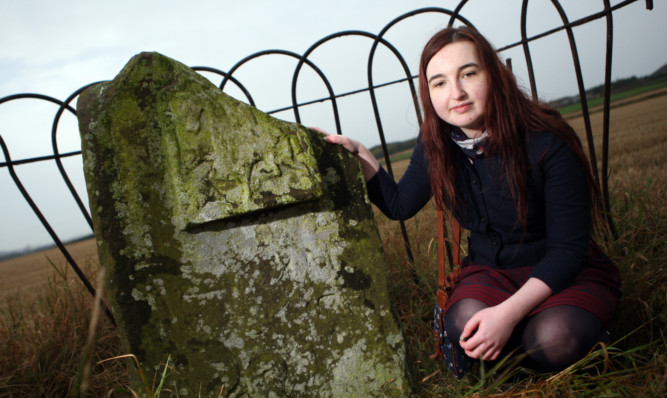Fresh analysis has shed light on one of Tayside’s oldest legends.
The folk tale of the Nine Maidens and the Dragon has inspired local place names, as well as the creation of a dragon statue in the city centre.
Yet no one knows the exact version of the original story, which was passed down through the generations by word of mouth.
Now a student from Dundee has written a project analysing the variations of the legend and its historical importance.
Morrison McKay, 20, said: “At first I didn’t know very much about the legend, and it seemed that others didn’t either.
“There are many variations of the story and I looked through archives, library books and local museums to find out more.
“It helped me understand Dundee’s history and culture.”
The legend of the Dundee Dragon is believed to have originated between the seventh and ninth centuries, when the Picts farmed the land in Tayside.
It is said that the name Strathmartine was given to the parish because of this story – although some maintain it was named after St Martin of Tours.
The legend tells of a farmer from the village of Pitempton who sent one of his nine daughters to fetch water from a well.
When she didn’t return, he sent the others one by one, but none of them come back either.
The farmer then goes to the well to discover his daughters dead and mutilated by a dragon-like beast.
Martin, the lover of one of the daughters, chases and slays the creature, watched by the village folk who chant “Strike, Martin”.
The parish was then named Strikemartin, later changed to Strathmartine, according to some versions of the story.
Some authors say Martin clubbed the beast to death whereas in other versions he stabs it in the heart, and some say the beast was in fact two snakes.
According to most versions, the dying speech of the beast as its lay its head on a stone – named Martin’s stone – goes as follows: “I was tempit at Pitempton, drailet (dragged) at Baldragon, stricken at Strikemartine, and killed at Martinstone.”
In her project, submitted to the University of the Highlands and Islands, Morrison wrote: “Apparently dragons were not always seen as evil; originally they were symbols of fertility, wisdom, and immortality.
“However, after the advent of Christianity they have become symbols of chaos.
“The legend could be the remembrance of a pagan religion whose fertility rites included human sacrifice.
“Perhaps sacrificing the Nine Maidens to the beast was a way of ensuring the fertility of the surrounding farmlands as payment in blood was often a method of appeasing the gods.
“However, suggestions have also been made that the story may merely be an attempt to explain the meaning of the symbols on the stone.”
